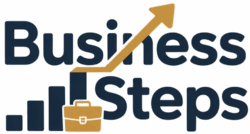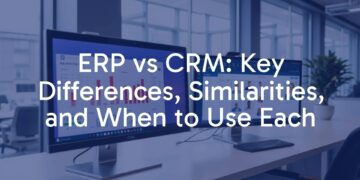A project management plan is much more than a formal document; it is the foundation for delivering a successful project. This written, approved guide directs the planning and execution of the project, highlighting the goals, expected results, and step-by-step instructions for reaching them. You can think of it as the project’s road map, guiding the team from beginning to end so that all involved are working toward the same result. Without a clear and detailed plan, projects are at risk of missing the mark, running into unexpected problems, and not meeting expectations.

Simply put, a project management plan is a flexible outline that changes as the project moves along, keeping things clear, making communication easier, and lowering risks. It is the main difference between a project that runs smoothly and one that falls apart, helping turn big ideas into something real.
What is a Project Management Plan?
Definition of Project Management Plan
A project management plan, at its core, is a detailed, formal paper that explains how a project will be handled from start to finish. According to the Project Management Body of Knowledge (PMBOK), it’s meant to guide both the day-to-day work and the control of the project. Unlike a simple checklist, this plan acts as a strategy that brings together everything needed to carry the project from concept to completion. It shows what the project aims to achieve and how – with every step and method spelled out.
This plan is “alive,” meaning it can be updated as the project changes. It defines what is included in the project (scope), the cost, the timeline, and quality requirements, as well as how to handle resources, risks, and communication. The plan serves as a single spot for everyone to refer to, making sure all team members know the plan, goals, and how results will be judged.
Project Management Plan vs. Project Plan
Although people may use “project management plan” and “project plan” as the same thing, they’re not. A project plan is more basic: it outlines the tasks, who will do them, and when. It gives a general picture – maybe a Gantt chart or a checklist to track progress.
The project management plan, on the other hand, covers much more. It includes all the details from a project plan and adds extra “mini plans” for areas like risk, communication, quality, or buying supplies. In short, the project plan tells you what needs to happen and when, but the project management plan explains how it will be managed, who is responsible for what, and what to do if something changes.

When Is a Project Management Plan Needed?
A project management plan isn’t just paperwork – it’s needed for almost any project, large or small. Whether you’re releasing a new product or building a road, any effort with a clear start and end and a specific goal benefits from having a written plan. Plans are especially important if there are lots of people involved, if resources are in short supply, or if you’re facing serious risks.
You should put this plan together during the planning stage of your project. Without one, you take the risk of the project slipping behind or running over budget. Northeastern University professor Jacques Alexis points out that poor planning has been a main reason for project problems for years. Having a project management plan avoids many of these issues, keeps everyone accountable, and helps the project reach its goals on schedule and within the set budget.
Why You Need a Project Management Plan
Main Benefits of a Project Management Plan
A good project management plan does more than keep you organized. It first gives everyone involved clear instructions. By spelling out goals, expected results, roles, and responsibilities, it gets rid of confusion and ensures that team members and stakeholders know what’s expected. When everyone understands their role, it encourages people to take ownership and stay accountable, helping the project move forward.
It’s also a key communication tool. With a single plan, information flows better among the team and any other involved parties. People can make decisions quickly and avoid misunderstandings. Plus, it helps manage risk. By thinking ahead about what could go wrong and preparing solutions, teams can fix issues before they grow, saving money and keeping the timeline on track. Overall, a project management plan gives your project a better chance of finishing successfully and on budget.
Risks of Not Having a Project Management Plan
Starting a project without a clear management plan is like going on a trip without a map. The risks are high – and often predictable. Common problems include poor results and wasted money, which the Project Management Institute’s 2020 report shows can be a huge issue for businesses. Projects without set boundaries easily fall victim to “scope creep” – extra work or changes that weren’t part of the original plan, leading to extra costs and longer timelines.
No plan can mean people don’t know what they’re responsible for, so things get missed or done twice, which slows everyone down. If no one takes time to accurately set the schedule, budget, or needed resources, the project can go wrong before it even begins. When there’s no plan for risks, any surprise can throw everything off track, leading to delays and unhappy clients. Not having a plan means running a project by luck instead of good management.

How a Well-Organized Plan Helps Projects Succeed
A detailed project management plan is more than notes on paper; it’s an important tool that affects how well a project turns out. By laying out all parts of the project in detail, it gives every team member a clear guide at each stage. This helps everyone know what needs to be done and by when, so work isn’t repeated or missed. It also helps set realistic goals, assign the right roles, and stay on budget and on track.
The plan is also used to measure progress. Setting solid goals for scope, schedule, and costs means the team can check regularly if they’re off course, and fix problems before they grow. It also encourages team members to keep transparent records and stay involved, so no one is left out. This kind of plan keeps the project moving forward with less confusion and more confidence.
Main Parts of a Project Management Plan
A strong project management plan contains different connected pieces that are all important for the project’s success. While the details may change based on the size and type of project, the following are almost always included:
| Component | Description |
|---|---|
| Scope Statement | Outlines precisely what is included in the project and what isn’t. This keeps the project team from doing extra, unplanned work (scope creep). |
| Work Breakdown Structure (WBS) | Breaks the full project into smaller tasks and packages. Makes planning and progress tracking easier. |
| Schedule and Milestones | Lists all activities, when they happen, their deadlines, and important checkpoints (milestones). |
| Budget and Cost Estimates | Details all expected expenses (labor, materials, equipment, etc.) so financial goals are clear and spending is controlled. |
| Quality Management Approach | Describes the standards and checks to make sure work meets requirements and delivers what is promised. |
| Human Resources Plan | Explains how the project team will be organized, hired, trained, and managed throughout the project. |
| Stakeholder List | Identifies everyone who cares about, influences, or is affected by the project (team, sponsors, customers, authorities). |
| Communications Plan | Details who needs what information, how often, and how it will be delivered (emails, meetings, reports). |
| Risk Management Plan | Lists likely risks, their seriousness, and how the team will deal with or avoid them (risk register, response plans). |
| Procurement Plan | Explains how equipment, materials, or services from outside the company will be chosen, contracted, and tracked. |

Scope Statement
The scope statement gives exact details about what will and will not be included in the project. This clarity is critical to prevent extra work and keep the project focused. A good scope statement is clear, measurable, practical, relevant, and tied to a timeframe (SMART). For example, if building a fence, it would specify the height, material, and location.
Work Breakdown Structure (WBS)
The WBS takes the overall job and divides it into smaller, doable pieces, called “work packages.” This helps everyone know their assignments, allows better estimates of time and costs, and makes the project easier to track and manage.
Schedule and Milestones
Since projects have a start and finish, the schedule tracks which tasks happen when. Milestones are bigger checkpoints along the way – like finishing the design or passing an inspection. Tracking these lets everyone see progress and spot problems early.
Budget and Cost Estimates
A project must stick to its set budget. This section lists all planned costs, including labor, materials, and other expenses. The budget should directly connect to tasks in the WBS so costs can easily be tracked and compared to what was expected.
Quality Management Approach
This part explains how the project will meet the promised level of quality. It includes standards, how work will be checked, and what happens if changes need to be made. Referencing existing industry standards (like ISO or ASTM) is common.
Human Resources Plan
The people on the project are often its most important part. This section lists roles, needed skills, hiring plans, training, team structure, and methods to motivate and review team members.
Stakeholder List
This is a list of all people or groups interested in or affected by the project. It’s important to update this regularly and consider both obvious and less-visible groups, as all can greatly affect the outcome.
Communications Plan
This explains how, when, and what information is shared and who receives it. Keeping everyone in the loop avoids confusion, builds trust, and means problems are reported quickly.
Risk Management Plan
All projects face uncertainties. This part lists the key risks, how likely they are to happen, the potential impact, and action plans if they occur (often tracked in a risk register). Knowing who will respond and how is a big help if things go wrong.
Procurement Plan
If you need to buy supplies or services, this part spells out the requirements, selection process, contract details (like Statements of Work), and ways to monitor progress and quality from outside companies.
How to Create a Project Management Plan
Developing a project management plan involves several steps to make sure the project idea becomes a clear, workable plan. Careful planning now will save headaches later. Here’s a basic process you can follow:
- Identify Requirements and Stakeholder Needs: Gather all expectations and needs from everyone involved. Ask questions, listen carefully, and understand what problems the project should solve.
- Define Scope and Objectives: Clearly state what the project will deliver and what will be left out. Use specifics and work with stakeholders to avoid extra, unplanned work.
- Create the Work Breakdown Structure (WBS): List all project deliverables, then break them down into smaller tasks so nothing is missed.
- Order Activities and Set Milestones: Arrange the tasks in sequence, noting which depend on others. Add key milestones to track progress.
- Estimate Resources, Time, and Costs: For each task, estimate how much time, money, and what people or equipment are needed. Build in extra time and money for possible problems.
- Assign Tasks and Responsibilities: Decide who does what, matching people’s skills to the work. List out roles and team structure so everyone knows their job.
- Plan for Risks: Identify problems that could come up and make a plan for handling them. List triggers for action and steps before issues get out of hand.
- Set Up Controls: Set up ways to check progress against plans, such as regular status meetings, dashboards, or review of milestones and costs.
- Write the Full Plan and Get Sign-Off: Document everything in a clear, organized way. Make sure leaders and key stakeholders approve before beginning the work.
Project Management Plan Examples and Templates
Seeing example plans and using templates makes it much easier to put together your own project management plan. Here’s a common structure you might follow:
- Introduction
- Project Management Approach
- Project Scope
- Deliverables
- Milestone List
- Work Breakdown Structure (WBS)
- Schedule Baseline
- Budget/Cost Baseline
- Quality Management Plan
- Resource Management Plan
- Stakeholder Management Plan
- Communications Management Plan
- Risk Management Plan
- Procurement Management Plan
- Change Management Plan
- Sponsor Approval Section
This outline ensures all areas are covered, making it easier to fill in your project’s details.
Practical Example
Project: Build Vehicle Bridge Across XYZ River
- Summary: Build a 500-meter bridge to improve transport between city regions.
- Goal: Complete in 18 months for $10 million, meeting safety and local rules.
- Scope: Includes land work, building superstructure, paving, installing guardrails and lighting, and testing. No landscaping outside the bridge area.
- Deliverables: Finished bridge, construction documents, permits, and final handover.
- Schedule: 73-week plan with phases such as start-up, land clearing, foundation work, superstructure, paving, testing, and handover.
- WBS:
- Start-up (permits, stakeholders)
- Planning
- Land Work
- Foundations
- Superstructure
- Paving
- Testing
- Handover
- Budget: $10 million, regular budget reviews, changes managed with approval.
- Risk Plan: Main risks (bad weather, supply issues), with backup plans if they occur.
- Resources: Assign team, workers, inspectors, and equipment, using a calendar.
- Communication: Meetings on-site, weekly emails, and chat tools.
- Change Process: Approvals needed for changes, tracked in a change log.
Free Templates
There are plenty of free templates online (in Word, Excel, or software) for project management plans. These templates have ready-made sections for all the parts you’ll need and guide you through the details. They are handy for anyone getting started or those who don’t want to start from scratch.
Best Tips for Managing and Updating Project Management Plans
A project management plan should change as your project develops. Update it regularly and check that it still matches what’s happening. Following some best practices can help keep the plan useful:
- Check and update the plan at the end of major stages or when something big changes (scope, budget, new risks, etc.).
- If circumstances change (e.g., market shifts or team changes), adjust the plan right away.
- For fast-changing projects, review the plan often – sometimes even daily.
- If the plan isn’t working or is out of date, update it promptly to avoid bigger problems.
How to Tell Stakeholders About Changes
It’s not enough to change the plan – you need to let everyone involved know as soon as possible. Use your communications plan to choose the best way (emails, meetings, reports). Always explain why changes are needed, how they affect the project, and what to expect next. Being honest, even about tough news, builds trust and keeps the team united.
Common Mistakes to Watch Out For
- Don’t write the plan once and leave it forgotten – update it regularly.
- Don’t skip involving stakeholders; their input makes the plan stronger.
- Don’t rush through planning; taking your time now prevents trouble later.
- Don’t over-plan and stall your project before it starts.
- Always add backup plans for risks – expecting that nothing will go wrong is unrealistic.
Useful Software Features for Project Plans
Using software to manage your project plan makes things easier and helps teams work together. Look for these key features:
| Feature | Why It Matters |
|---|---|
| Gantt Charts & Scheduling | Show tasks, their timing, and dependencies visually. Easy scheduling and changes, with updates reflected for all. |
| Collaboration Tools | Allow the team to share updates, files, and feedback in real time. Keeps all information in one place. |
| Resource & Budget Management | Track people, equipment, and money. Features like calendars and cost tracking help avoid overloads or overruns. |
| Risk Tracking | Monitor possible problems, record how likely they are, and keep plans for what to do if they happen. |
Common Project Management Plan Terms
Here are some key terms you’ll often see in project management plans:
- Deliverable
- The end result or product the project sets out to create.
- Stakeholder
- Anyone with an interest in or influence over the project.
- Tasks
- Small pieces of work needed to complete a larger goal.
- Milestone
- Important points or events that mark progress in a project.
- Resources
- People, tools, money, or materials needed to complete work.
- Budget
- The total amount of money allocated to the project.
- Tracking & Monitoring
- Checking that work is moving as planned and on schedule.
- Scope Creep
- Uncontrolled expansion of work beyond what was agreed upon.
- Work Breakdown Structure (WBS)
- A breakdown of all work needed for the project, in a hierarchy from larger tasks to smaller ones.
- Baseline
- The original, approved version of a plan (scope, cost, or time) against which changes are measured.
- Contingency
- Extra time or money set aside for possible problems or delays.
- Risk Register
- A list of all known risks and how you plan to address them.
- Statement of Work (SOW)
- Detailed description of what a hired contractor or supplier is to provide.
Frequently Asked Questions about Project Management Plans
What Are the 5 Processes of Project Management?
- Initiation: Set up the project by defining goals and whether it should go ahead.
- Planning: Develop the full project management plan and set how the work will be done.
- Execution: Carry out the actual work as described in the plan.
- Monitoring & Controlling: Check progress, compare to the plan, and fix problems.
- Closure: Finish up, hand over deliverables, and review what went well or could be better next time.
Can a Project Management Plan Change?
Yes, and typically it will. The project management plan is designed to be updated as the project moves forward. If something changes (budget, schedule, scope), follow the process in the change management section of the plan, get the right approvals, and make sure everyone is informed.
Who Approves the Project Management Plan?
While the project manager puts the plan together (with help from the team), the project sponsor usually gives final approval. Sometimes, other important people, like department heads or main clients, also need to approve parts of the plan. This formal agreement gives the green light to proceed.





































